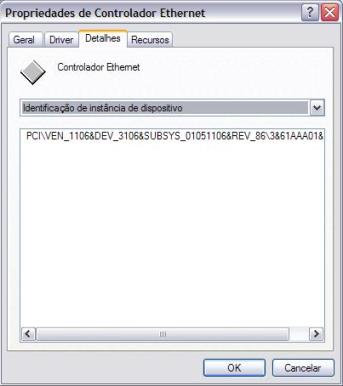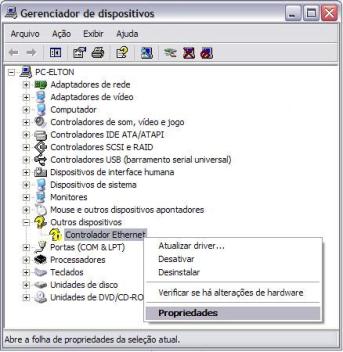- Scsi Controller Driver
- Scsi Adapter Windows 10 Driver
- Asix Scsi & Raid Devices Driver Downloads
- Adaptec Scsi Drivers
- Asix Scsi & Raid Devices Driver Download Windows 10
How To
USB Attached SCSI (UAS) Compatible Device Driver Downloads. To find the latest driver for your computer we recommend running our Free Driver Scan. ATI RAID Console: SCSIAdapter: 2.5.1540.44: 6/12/2007: ATI E/A-Kommunikationsprozessor-LPC-Controller: System. Download driver ASIX AX88772/772A USB2.0 to Fast Ethernet Adapter Driver version 3.12.3.2 for Windows XP, Windows Vista, Windows 7 32-bit (x86), 64-bit (x64). Screenshot of files Installation screenshots ASIX AX88772/772A USB2.0 to Fast Ethernet Adapter Driver File Name. Select the TSM-SCSI-MT for any supported tape drive or TSM-SCSI-OP for any supported optical drive. Select the adapter to which you are connecting the device. This number is listed in the form: 00-0X, where X is the slot number location of the SCSI adapter card.
- For automatic identification and scsi & raid devices drivers, we strongly recommend to download and install the Driver Update Tool – it will help you to get the correct latest drivers for all of your devices and avoid conflicts and improper work of your system. Note: Improper or outdated drivers in your system may cause system failure, blue screen also known as “Blue Screen of Death.
- The program will now clone your SCSI Hard disk. That is it, you now have a clone or an img file of your SCSI Hard disk. If you created an image file this can now be used to make multiple clones. To go the opposite way e.g. Burn an image to SCSI Hard disk, choose an image file in t he first window and then an SCSI Hard disk in the second.
Summary
How to create virtual SCSI adapters on PowerVM Virtual I/O Server (VIOS) and AIX client using the HMC Classic GUI. This includes:
1. Creating the virtual SCSI Server adapter, which translates to a vhost# on the VIOS and
2. Creating the virtual SCSI Client adapter, which equates to a vscsi# on AIX OS.
Objective
To create new virtual SCSI adapter on a running VIOS and AIX client.
Steps
The following procedure uses Dynamic Logical Partition (DLPAR). This HMC function requires the VIOS and AIX client partitions to have network connectivity and an active RMC connection.

NOTE 1:
- If the partition (VIOS or AIX) is not on the network or RMC is inactive, the adapter must be added to the partition's profile. By HMC design, changes to a partition's profile require the partition to be reactivated (Shutdown; Activate) for the profile changes to take effect.
- For single VIOS environments where DLPAR operation is not possible (due to lack of network or inactive RMC), a maintenance window will be required to shutdown all the clients prior to reactivating the VIOS.
- For dual VIOS environments, ensure the clients' storage and network are fully redundant via the second VIOS prior reactivating the VIOS in question.
In this example, we will create virtual Server SCSI adapter ID 22 on VIOS partition, p7virtvios1 (LPAR ID 2) to connect with virtual Client SCSI adapter ID 10 on AIX partition, virt07-Margarita (LPAR ID 12 decimal/hex C).
PART 1 - Creating the virtual Server SCSI adapter
1. Login to the HMC Classic GUI as hscroot.
2. In the navigation area, open Systems Management and select Servers.
3. Select the managed server of your choice in the navigation area.
4. Select the Virtual I/O Server, click Tasks > Dynamic Partitioning > Virtual Adapters.
5. From the Virtual Adapters window, click Actions > Create Virtual Adapter > SCSI Adapter. The SCSI Server Adapter Properties window is shown.
6. Specify the adapter ID and your connection preferences (client partition and client adapter ID) to use for this virtual SCSI adapter. Notes:
- You can use any slot number from 2 up to (but not including) the maximum number of virtual adapters. (Slots 0 and 1 are reserved for system-created virtual adapters. If the logical partition is a Virtual I/O Server logical partition, other slot numbers might also be reserved.) For example, if the maximum number of virtual adapters is 10, and the logical partition is not a Virtual I/O Server logical partition, you can use any slot number from 2 to 9. By default, the system displays the lowest unused slot number for this logical partition.
- You cannot use a slot number that was used for any other virtual adapter on the same logical partition.
To list the adapter IDs currently in used on the VIOS, login to the VIOS as padmin and run:
$ lsdev -slots where C## is an adapter ID in use as shown below
In this example, we will create adapter ID 22 to connect to client SCSI adapter ID 10 (to be created next) on AIX partition, virt07-Margarita as shown below:
7. Click OK to create > click OK again to apply the change (dynamically). At this point, you can expect to see the newly configured virtual server SCSI adapter, vhost12, in this case:
'lsmap -vadapter vhost#' can be used to display the new virtual Sever SCSI adapter mapping:
Note: lsmap displays the Client Partition ID in hexadecimal value (c, this case), whereas the HMC displays decimal value (12).
8. Update the VIOS partition's profile with the new virtual SCSI adapter: (You must update the logical partition profile so that the next time it is activated (Shutdown; Activate), the new virtual SCSI adapter is not lost.)
a. Select the Virtual I/O Server partition, click Tasks > Configuration > Save Current Configuration.
b. Either Overwrite existing profile or save the changes to a New profile.
c. Click OK.
Creating the virtual Client SCSI adapter
9. Select the client partition, click Tasks > Dynamic Partitioning > Virtual Adapters. (The Adapter ID column shows the client adapter IDs currently in use).
10. From the Virtual Adapters window, click Actions > Create Virtual Adapter > SCSI Adapter. The SCSI Client Adapter Properties window is shown.
11. Specify the client adapter ID, Server (VIOS) partition, and Server Adapter ID. Note: This information must match what was specified in step 6. In our example, we used client adapter ID 10, Server (VIOS) partition, p7virtvios1, Server (VIOS) adapter ID, 22:
Ensure the virtual Server and Client SCSI adapter information cross-reference each other. Below is a comparison of our example:
12. Click OK to create > click OK again to apply the change (dynamically).
13. Login to the AIX client, as root, and run cfgmgr to discover the newly created virtual Client SCSI adapter:
# cfgmgr
14. Verify the expected virtual client SCSI adapter ID was discovered on the AIX client. In this case, vscsi3 was configured at adapter ID C10:
# lscfg -v|grep vscsi
If the new virtual SCSI client adapter was created on an IBM i or Linux partition, and you have questions specific to the client OS, please, contact your local client OS Support team.

Document Information
Modified date:
24 September 2018
|
|
SCSI device numbering
During installation, hard disk numbering is based on the SCSI address of the PV (hdisk?), as well as the SCSI controller slot number.
- On the RS/6000 model series 5×0, 7×0, and 9×0, AIX starts checking at microchannel slot #8 and works it’s way up to slot #1.
- For the model 3×0 series, hdisk numbering starts from slot #1 and works it’s way down to slot #4.
- Do not have more than 3 SCSI devices configured for each SCSI controller for performance reasons.
bootlist
<td “>Attempts to boot over the network first, then from any SCSI attached device(s)
| Examples | What it does |
| bootlist -m normal badisk scdisk | Will look for any bootable bus attached disk first, then will look for any bootable SCSI disk last. |
| bootlist -m normal en0 scdisk |
chdev
Change one or more attributes for a specific device configuration. If the chdev command doesn’t change the attribute in question, you may have to make the device DEFINED first. Change the device attribute by making the device AVAILABLE.

| Examples | What it does |
| chdev -l tty22 -a login=delay -a speed=19200,9600,2400,1200 | Changes the terminal port (tty22) to autobaud between the speeds of 19200 downto 1200. If your login attribute is set to delay (login=delay), a modem can also use this port for calling out or receiving incoming calls. May have to generate a BREAK sequence so getty process will downshift to the next speed when logging in from a modem so both sides are communicating at the same speed. One or more carriage returns must be entered at the keyboard BEFORE a login prompt is generated to the terminal screen. A DELAY port will NOT generate a login prompt automatically like a ENABLE port will. |
| rmdev -l tty22 | Makes the device defined |
| chdev -l tty1 -a logger=/usr/bin/mview | Whenever the system is rebooted, the program /usr/bin/view will be executed on terminal tty1, so that when that terminal is turned on, that application will already be running. |
| chdev -l scsi0 -a dbmw=0x902000 -P | -P=permanent change. Must reboot for change to take effect. Changes the maximum transfer rate to/from scsi0 device to 8MB. Applies to ALL devices attached to this SCSI controller. Useful for speeding up backup procedures, since it allows writes of multi-megabyte record length to a tape device. |
| chdev -l hdisk1 -a pv=yes | Changes an available disk to a physical volume |
| mkdev -c tape -t 8mm -s scsi -p scsi0 -w 30 | Creates a new 8mm tape device using scsi controller ‘0’ with a scsi id of ’30’. |
| chdev -l rmt0 -a ret=yes | Instructs the tape drive to retension a tape automatically whenever a tape is inserted. Retensioning involves winding a tape to the end and then rewinding back to the beginning. Helps reduce tape errors by evening the tension throughout the tape. Default is no |
| chdev -l rmt0 -a density_set_1=17 -a density_set_2=16 | Sets the preferred density value to the HIGHEST density possible on that tape drive, while density_set_2 sets the next highest density setting on the tape drive. |
| chdev -l rmt0 -a compress=yes | If the drive is capable of compression, data written to the tape will NOT be compressed. Read operations aren’t affected by the setting of this attribute. |
cfgmgr
Automatically configures devices that have been just added or not powered on since the system was last rebooted.
format, fdformat
The format command formats a diskette for high density (default)
The fdformat command formats a diskette for low density (default).
The format command determines the device type, which is one of the following:
(Sector size is 512 bytes for all diskette types.)
| Type | Floppy Size | Tracks | Sectors |
| 360K | 5.25-inch low-density | 40×2 | 9 |
| 720K | 3.5-inch low-density | 80×2 | 9 |
| 1.2MB | 5.25-inch high-capacity | 80×2 | 15 |
| 2.88MB | 3.5-inch high-capacity | 80×2 | 36 |
| Examples | What it does |
| format -d /dev/rfd0 | Format a diskette residing in the /dev/rfd0 device for high density |
| format -l -d /dev/fd1 | Format a 360K-byte diskette in a 5.25-inch, 1.2M-byte floppy drive |
| format -d /dev/fd0 | Format a 720K-byte diskette in a 3.5-inch, 1.4M-byte floppy drive A 360K-byte diskette drive may not be able to read a 360K diskette that has been formatted in a 1.2M-byte drive. |
| format -d /dev/fd0.9 | Format a 720KB diskette |
| format -d /dev/fd0.18 | Format a 1.44MG diskette |
| format -d /dev/fd0.36 | Format a 2.88MG diskette |
| fdformat -h | Force high-density formatting of a diskette |
Scsi Controller Driver
lsattr – List attributes for a specific device.
| Options | What it does |
| -E | Current |
| -a | Attribute name |
| -l | Class names: tty, printer, tape, disk, adapter, dlc, bus, diskette, if, memory, logical_volume, mouse, port ` |
| Examples | What it does |
| lsattr -l rmt0 -E | Lists current attributes for tape drive mode. |
| lsattr -l tty0 -a speed -R | -R=range of baud rates. List valid ranges for speed attribute for a tty device |
| lsattr -l scsi0 -E | Display current attributes about scsi0 device |
| lsattr -l cxma0 -E | Display the characteristics of a defined 128-port async adapter |
lscfg – List all devices currently connected to the system
| Examples | What it does |
| lscfg | Partial listing |
| lscfg -v | Lists hardware and firmware levels for each device – if applicable |
| lscfg -l ent0 -v | Lists hardware and firmware levels for ent0 (ethernet) device |

Scsi Adapter Windows 10 Driver
lsdev – List device attributes
| Options | What it does |
| -E | Current |
| -a | Attribute name |
| -l | Class names: tty, printer, tape, disk, adapter, dlc, bus, diskette, if, memory, logical_volume, mouse, port |
| Examples | What it does |
| lsdev -C | Lists all those devices that are currently configured (-C) since the system was either LAST rebooted OR the smit cfgmgr command was run. |
| lsdev -C|grep rmt | Displays attributes for the ‘rmt’ (magnetic tape) devices only |
| lsdev -P -H | Displays different attributes from PREDEFINED database |
Asix Scsi & Raid Devices Driver Downloads
mkdev – Adds a device to the system.
Adaptec Scsi Drivers
This command can also be used to change the STATE of a device. Devices NOT turned on when the system is rebooted will only be DEFINED to the system. To access those physical devices, they MUST be in an AVAILABLE state.
| Examples | What it does |
| mkdev -l tty1 | Assumming the device state is DEFINED, will bring that device to an AVAILABLE state. A device that is DEFINED means the system knows that the device exists BUT has not been made it available for use. |
| mkdev -l rmt0 | If the power to the tape device was NOT turned on when the system was last rebooted, this device will be in a DEFINED state. To make this device available for use, execute this command. |
| mkdev -ctty -ttty -srs232 -psa2 -w11 -alogin=enable -aterm=ibm3151 | Creates a new terminal device on port 11 on adapter sa2. sa2 could be either an 8,16, or 64 port adapter card. The port is configured as an ibm3151 CRT and will generate a login prompt when turned on. |
rmdev – Removes a device from the system
Asix Scsi & Raid Devices Driver Download Windows 10
| Examples | What it does |
| rmdev -l tty1 | Assumming the device state is AVAILABLE, will bring that device to a DEFINED state. If this command fails with a ‘/etc/methods/ucfgtty’ error, chances are the getty process is still running on that port. Use the pdisable command to stop the getty from running. Then execute the rmdev command so the port in question can go to a DEFINED state. |
| 1) pdisable 1 2) rmdev -l tty1 -d | -d=deletes the tty definition from the ODM database. In order to remove the terminal device tty1 from the system, you must first disable the tty, followed by removing all instances of that device by using the ‘-d’ option. If there is a getty running on the terminal port to be removed AND that getty is not disabled, the following message will appear on screen: Method error (/etc/methods/ucfgtty): 0514-062 Cannot perform the requested function because the specified device is busy |